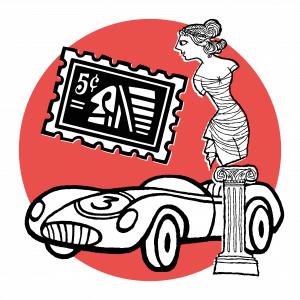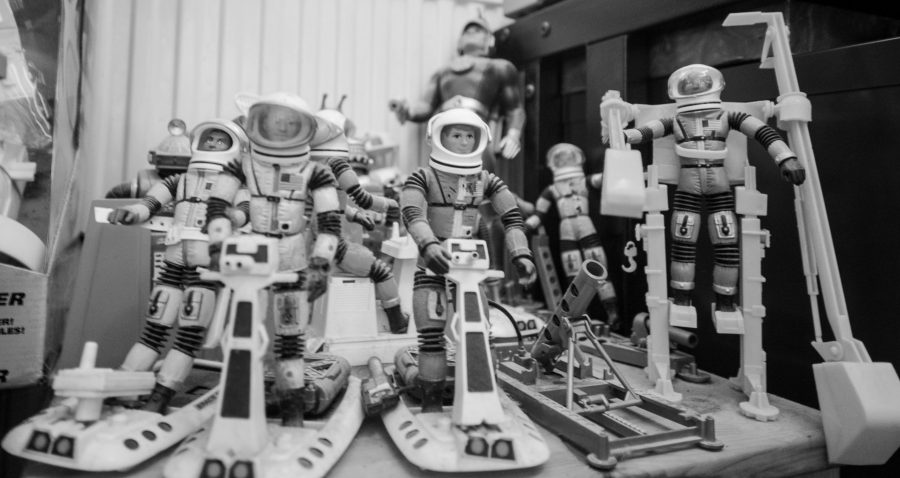Originally published spring 2019.
Collectors may be driven by obsession – but are toys also a viable investment asset?
There is a big difference between an investor and a collector. The former gives up capital today in the expectation of greater returns in the future. A collector is much less rational.
The items being collected are often not what even motivates them. It’s an obsession – and driven by something deeper.
I can say this because I have always collected things. Initially it was comics, then toys, records, snow globes – and eventually original comic artwork. It is no coincidence that my most manic moments of collecting coincided with some of the most challenging times in my life. Collecting allows an element of control in a small part of your life at a time when circumstances in other areas are uncertain.
I once suggested this theory to a friend of mine. Initially she dismissed it as pseudo psychology and said that she used to collect things (ceramic animals) and there wasn’t anything missing in her life at the time. I asked her when she acquired the bulk of her collection. She replied: “during my divorce”. I rest my case.
Despite their differences, collecting and investing can and do overlap. In fact, my collections are now very valuable.
Take my main one – toys. Toy collecting is, unsurprisingly, a phenomenon of the 20th century. Prior to that (though there are exceptions) toys were not mass-produced – they didn’t enter the collective consciousness, and those that were made were played with and rarely survived more than a couple of generations. It was in the postwar period that consumerism became the norm and mass-produced toys took over childhood.
For example, although Dinky Cars (part of the Mecanno Group) was started in 1934, its initial offer was limited and relatively expensive. It wasn’t until the 1950s, with competition from Matchbox Cars (1953) and Corgi Cars (1956), that large numbers of toy cars became the norm. This kickstarted collecting. The cars were everywhere, and children could now acquire all the models available – and were encouraged to, with each car being numbered. (Having ample numbers to play with, a few might even keep some cars in their boxes.)
The widespread presence of such toys also gave rise to collective nostalgia in future years – an important driver of adult collecting.
As a child of the 1960s, my “wants” included all the Dinky and Corgi cars related to the TV series of the time. Clever marketers recognised that children desired toys linked to their favourite TV shows and films. Corgi, in particular, bought licences to reproduce vehicles, including the iconic James Bond Aston Martin of 1965 (the bestselling diecast toy car of all time), the Batmobile of 1966 and the Thrushbuster from The Man from Uncle (1966).
Even though they were highly coveted by children of the time, and some children sought to collect them all, there wasn’t a widespread mentality of saving them as investments. Like all my friends, I played with my toy cars. We did what we were supposed to do – and what the toys had been produced for.
The unintended outcome was that the value of pristine versions today is astronomical compared to the original purchase prices. But this potential increase in values is reliant on having an active market for sales. For my collection of 1960s toys to be worth anything, it needs potential buyers who share my fondness for the toys of that era.
Toys that feature perennial (or revitalised) icons will always have a robust market. The Marvel characters of the 1960s have enjoyed renewed demand ever since the recent films started being released. The sad death last year of their principal creator, Stan Lee, also saw a new generation of collectors drawn in.
But other 1960s toys have been less lucky. For example, Joe 90’s car means nothing to anyone other than children of the 1960s – and such items will become less and less valuable as potential buyers literally die out. Those with an eye to selling a collection need to be sure they do not wait too long, or focus instead on collecting toys that appeal to multiple generations.
What are the returns like if you get it right? Not bad at all. A Corgi Batmobile boxed and in perfect condition, which cost 12 shillings and 11 old pence in 1966 (64 pence today), can fetch upwards of £600 now. That is an annual return of 12%. Fairly respectable for an unintentional investment!
That said, most collectors don’t have pristine toys from our childhood; we are buying them at already inflated prices. I bought my Batmobile in 1998 for £200, so the annual return is only 5.5% compounded (assuming that I can get the top price in the market today).
Selling a collection is not easy. There are plenty of methods – from specialised toy auctions to eBay and its equivalents, as well as private sales to dealers or other collectors.
But it is no small task to arrange and catalogue some collections
(mine is ridiculously large). And then there is the emotional wrench of parting with them. That is why many collectors never realise the investment value of their collections. They weren’t motivated by the idea of making money; they were motivated by owning the toy. Why part with something if you don’t need to?
I used to entertain my MSc students to tea at my house each year and give them the grand tour of my collections. One year, a very insightful young student, after looking at the vast displays of toys and comics and other curiosities, looked at me and said: “Someone is going to have a problem when you are dead.” Harsh, perhaps – but it highlights the inbuilt futility of collecting. Collectors rarely have an exit strategy.
Is collecting a viable investment? I am sure that there are a number of individual and dealers that make a good living out of trading collectables – but true collectors simply collect. We get our reward by owning the items, by enjoying the display of the fruit of our endeavours.
We are, at best, accidental investors.








